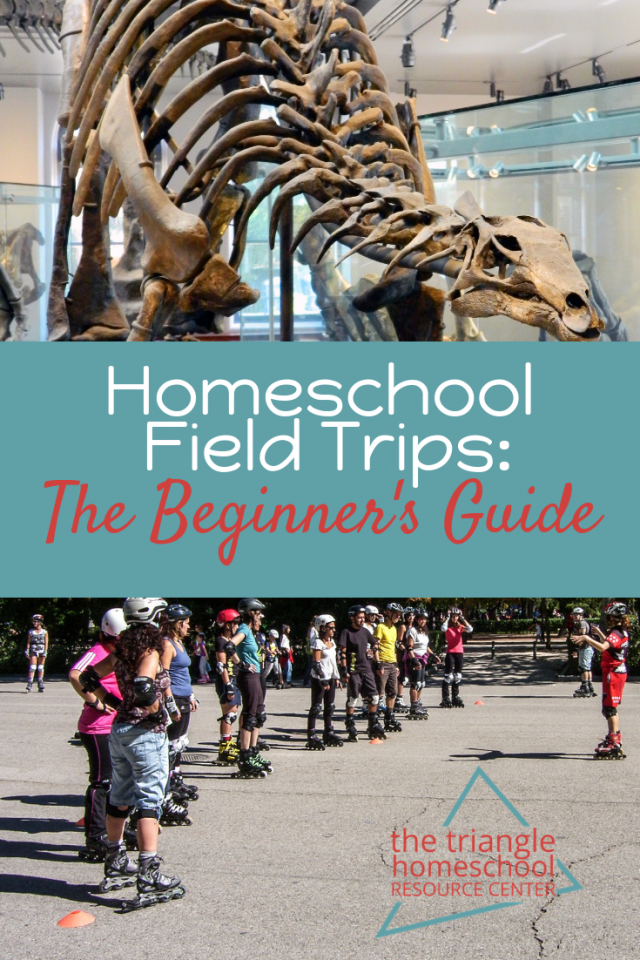One of the things we non-traditional educators think our kids will miss out on is field trips. But homeschoolers often have more opportunities to reach into their community and beyond for these outside-the-box learning tools. Learn what makes a field trip great, and you’ll be rewarded with a more fulfilling homeschool journey!

What Are Homeschool Field Trips?
For most homeschoolers, a field trip simply means anything that gets them out of the house!
Going to the local park? Field trip ✔
Taking all the kids to the grocery store? Field trip ✔
Getting your annual mammogram? Field tr… oh wait, not that one.
But really, is it a field trip to make an everyday errand into a teachable moment? Probably not. After all, we do that, well, every day. A real field trip should be next-level.
To Make It a Field Trip, Make It Different.
A field trip should be something out of the ordinary. But that doesn’t mean it has to be hard to find or you have to wait for a special event.
You can make that trip to the park extraordinary by inviting some homeschool friends and doing a nature scavenger hunt.
Take the grocery run up a notch by calling ahead and asking for a behind-the-scenes tour.
Get a group of pals together for go-karting or a ropes course. Phys Ed field trips count too! You can probably even score a group discount!
Should a Field Trip Be Relevant to Our Curriculum?
There are varying opinions on this. You may need to experiment to see what works for your family. If field a field trip to a local Civil War battlefield makes you change gears in the middle of studying Ancient Egypt, perhaps that particular field trip can wait. That battlefield isn’t going anywhere, after all. On the other hand, if there’s a traveling exhibit of Georgia O’Keefe masterpieces while you’re deep in the Italian Renaissance, you don’t have to miss it. Take the opportunity to debate the influence, or lack thereof, of the Italian Renaissance on American Modernism.
For Real Field Trip Success, Follow These Steps
1. Explore the possibilities.
The first thing you have to do, of course, is to find field trips.
- Google parks and museums in your area. Get on their mailing lists and subscribe to their calendars for special events.
- Check local newspapers and television stations for community events like cultural festivals.
- Start clicking “Interested” on Facebook events and you’ll start seeing ads for more of the same.
- Research your home area – or further if you’re an explorer – as if you were a tourist. Check out Convention and Visitor’s Bureaus for maps and information on special attractions and events.
- Join a homeschool group that arranges group trips.
2. Do your research.
Once you have decided on where to go, whether you are going on your own or with a group, here are some things to do to prepare.
- Know the venue. What is the age range? Will you need to keep your older or younger children occupied with other activities? Is it stroller-friendly or handicap accessible?
- Make a plan for the timeframe. How long will it take you to get there? How long will you spend? Will you need meals or snack?
- Establish cost. Are there discounts available for homeschoolers?
- Many museums, parks, and landmarks have resources for educators on their websites. See if there are special tours or guides you may be able to use for your visit. (For example, check out the educator resources and homeschool information from the North Carolina Museum of History.)
3. Make the pre- and post-trip lesson plans.
You want to enjoy field trips and not kill the excitement by making everything into schoolwork for your kids. Digging into the trip together though can help you make it a more memorable learning experience. Here are some ideas to get you going:
- Talk about the field trip! Share your excitement! And give the kids some ownership. If it’s a museum, what do they most want to see? Can they plan the route? Or maybe just their snacks for the day?
- Print out maps or schedules and designate a “Field Trip Tourguide” for the day.
- Check out books from your home or local library for some background information. Are you going to see dinosaurs? Or an arboretum? You can do lots of pre-reading that will up the engagement factor when you get there!
- Plan to take pictures. Do you want the kids to take notes or make sketches? Prepare some journal pages as guides. If the children don’t make notes, take note yourself of their questions, or what piques their interest so you can follow that path when you get back home.
4. Enjoy your field trip!
Just like any homeschool day, things may not go as planned. If you’ve prepared together and generated excitement for your outing, you’ve already made memories worth having!
5. Repeat. Often.
Field trips, outings, enrichments – whatever you call them, these breaks from your routine will help make your homeschool journey fulfilling and memorable!
Comment and let us know what you are hoping to get from field trips in your homeschool plan!


I really enjoy your information. I have been homeschool for over 6 yrs and there is never enough information that can make homeschool fun as well as exciting.
Thanks so much for your feedback, Tina! So glad the site has been helpful for you!